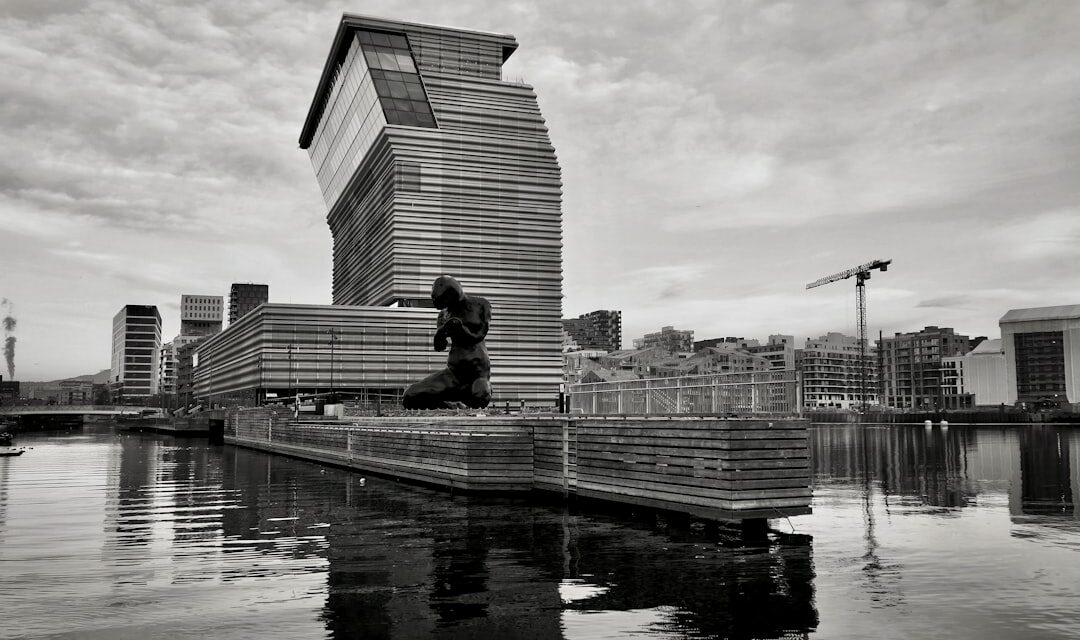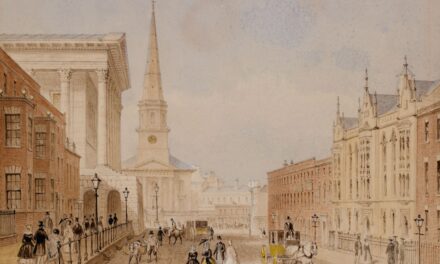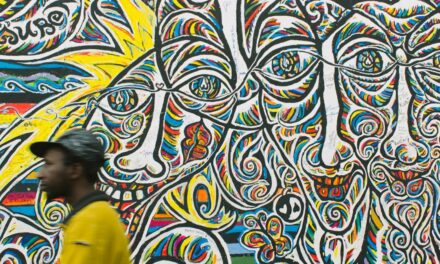Expressionism is an artistic movement that emerged in the early 20th century, predominantly in Germany. This movement aimed to convey the emotional and psychological experiences of the artist, rather than merely depicting the physical world. Expressionist artists endeavoured to communicate their inner feelings and emotions through their work, often utilising bold and exaggerated forms, vibrant colours, and distorted perspectives.
This movement arose as a reaction against the naturalism and impressionism that were prevalent in the art world at the time, and it sought to challenge traditional artistic conventions by prioritising the subjective experience of the artist. Expressionism is not confined to visual art; it also encompasses literature, theatre, cinema, architecture, and music. In each of these forms, expressionist artists attempted to convey the inner turmoil and emotional intensity of the human experience.
The movement was characterised by a rejection of traditional artistic techniques and a focus on the inner world of the artist. Expressionism was a deeply personal and introspective movement that aimed to capture the essence of human emotion and experience.
Summary
- Expressionism is an art movement that focuses on expressing emotions and inner experiences rather than external reality.
- Originating in Germany in the early 20th century, Expressionism was a response to the disillusionment and anxiety of the time, particularly in the aftermath of World War I.
- Key characteristics of Expressionism include distorted and exaggerated forms, bold use of colour, and a focus on conveying intense emotions and psychological states.
- The impact of Expressionism on art and culture was significant, influencing not only visual arts but also literature, architecture, and film.
- Famous Expressionist artists include Edvard Munch, Wassily Kandinsky, and Egon Schiele, who all made significant contributions to the movement.
Origins of Expressionism
The Roots of Rebellion
The origins of Expressionism can be traced back to the early 20th century in Germany, where a group of artists and writers sought to break away from the traditional artistic conventions of the time. The movement was a response to the social and political upheaval that was taking place in Europe at the time, particularly in Germany. The rapid industrialisation and urbanisation of society led to a sense of alienation and disillusionment among many artists, who sought to express their inner turmoil through their work.
Influences and Inspirations
One of the key precursors to Expressionism was the work of Vincent van Gogh, whose bold use of colour and expressive brushwork had a profound influence on the movement. Other influences included the work of Edvard Munch, whose iconic painting “The Scream” is often cited as a quintessential expressionist work. The movement also drew inspiration from the writings of Friedrich Nietzsche and Sigmund Freud, whose ideas about the subconscious and the irrational had a significant impact on expressionist artists.
The Rise of Expressionism
The movement gained momentum in the early 20th century with the formation of groups such as Die Brücke (The Bridge) and Der Blaue Reiter (The Blue Rider), which sought to create a new artistic language that reflected the inner experiences of the artist. These groups were instrumental in promoting expressionist art and bringing it to a wider audience. The movement also spread beyond Germany, influencing artists in other parts of Europe and even in the United States.
Key Characteristics of Expressionism

Expressionism is characterised by several key features that set it apart from other artistic movements. One of the most distinctive characteristics of expressionist art is its use of bold and exaggerated forms. Expressionist artists sought to distort reality in order to convey their inner emotional experiences, often using elongated or contorted figures to create a sense of unease or disquiet.
This distortion of form was a deliberate rejection of naturalistic representation, as expressionist artists sought to convey the inner essence of their subjects rather than their outward appearance. Another key characteristic of expressionist art is its use of vivid and intense colours. Expressionist artists often used bold and vibrant hues to convey their emotional states, using colour as a means of expressing their inner turmoil.
This use of colour was a departure from the more subdued palettes of previous artistic movements, and it served to heighten the emotional impact of expressionist works. In addition to its use of form and colour, expressionist art is also characterised by its focus on the inner world of the artist. Expressionist artists sought to convey their subjective experiences and emotions through their work, often using symbolism and allegory to communicate their inner turmoil.
This introspective approach to art was a radical departure from the more objective and detached approach of previous artistic movements, and it served to create a deeply personal and emotive body of work.
The Impact of Expressionism on Art and Culture
The impact of Expressionism on art and culture was profound and far-reaching. The movement challenged traditional artistic conventions and paved the way for new forms of artistic expression. Expressionist art had a significant impact on subsequent movements such as surrealism, abstract expressionism, and even pop art, all of which sought to convey the inner experiences of the artist.
In addition to its influence on other artistic movements, Expressionism also had a lasting impact on popular culture. The bold and expressive forms of expressionist art found their way into advertising, graphic design, and even fashion, influencing a wide range of cultural products. The emotional intensity and psychological depth of expressionist works also had a profound impact on literature, theatre, and film, inspiring new forms of storytelling and characterisation.
The impact of Expressionism was not limited to the arts; it also had a significant influence on society as a whole. The movement emerged at a time of great social and political upheaval in Europe, and it served as a means of expressing the anxieties and disillusionment of the era. Expressionist art reflected the alienation and dislocation experienced by many people in the modern world, giving voice to their inner turmoil and emotional struggles.
Famous Expressionist Artists
Several artists are synonymous with the Expressionist movement due to their groundbreaking work that epitomised its key characteristics. One such artist is Edvard Munch, whose iconic painting “The Scream” has become an enduring symbol of existential angst and emotional turmoil. Munch’s use of bold colours and distorted forms captured the intense emotional experiences that were central to expressionist art.
Another influential figure in the Expressionist movement is Ernst Ludwig Kirchner, a founding member of the Die Brücke group. Kirchner’s work often depicted urban scenes with distorted figures and vibrant colours, reflecting the alienation and dislocation experienced by many people in rapidly industrialising societies. Egon Schiele is another prominent figure in Expressionist art, known for his provocative and emotionally charged portraits.
Schiele’s use of contorted forms and intense colours conveyed a sense of psychological intensity that was central to expressionist art.
Expressionism in Theatre and Film

Theatre and the Expressionist Aesthetic
In theatre, expressionist plays often featured distorted sets, exaggerated costumes, and heightened performances that aimed to convey the inner emotional states of the characters. These plays often dealt with themes of alienation, madness, and existential angst, reflecting the broader concerns of expressionist art.
Bringing Expressionism to the Silver Screen
In film, expressionist techniques were used to create visually striking works that conveyed psychological depth and emotional intensity. German filmmakers such as Fritz Lang and F.W. Murnau were instrumental in bringing expressionist techniques to cinema, using distorted sets, dramatic lighting, and exaggerated performances to create a sense of unease and disquiet.
Timeless Classics of Expressionist Cinema
The influence of expressionism can be seen in classic films such as “The Cabinet of Dr. Caligari” (1920) and “Nosferatu” (1922), both of which used expressionist techniques to create haunting and atmospheric works that continue to resonate with audiences today.
The Legacy of Expressionism
The legacy of Expressionism can be seen in its enduring influence on subsequent artistic movements and its lasting impact on popular culture. The movement paved the way for new forms of artistic expression that prioritised the inner experiences of the artist, leading to movements such as surrealism, abstract expressionism, and pop art. Expressionism also had a profound impact on popular culture, influencing everything from advertising and graphic design to literature and film.
The emotional intensity and psychological depth of expressionist works continue to resonate with audiences today, inspiring new generations of artists and creators. The legacy of Expressionism can also be seen in its lasting impact on society as a whole. The movement emerged at a time of great social and political upheaval in Europe, reflecting the anxieties and disillusionment experienced by many people in the modern world.
Expressionist art gave voice to these inner struggles, providing a means for people to express their emotional turmoil and psychological depth. In conclusion, Expressionism was a groundbreaking artistic movement that sought to convey the emotional and psychological experiences of the artist through bold forms, vivid colours, and distorted perspectives. The movement had a profound impact on art and culture, influencing subsequent movements and leaving behind a lasting legacy that continues to resonate with audiences today.
If you are interested in learning more about different art movements, you may want to check out an article on Impressionism. Impressionism was a 19th-century art movement that focused on capturing the fleeting effects of light and atmosphere. It was a significant precursor to Expressionism and had a profound impact on the development of modern art. Understanding Impressionism can provide valuable context for appreciating the evolution of artistic styles and techniques.
FAQs
What is Expressionism?
Expressionism is an art movement that originated in Germany at the beginning of the 20th century. It is characterized by the artist’s subjective and emotional response to the world, often using distorted and exaggerated forms to convey their inner feelings and emotions.
What are the key characteristics of Expressionism?
Key characteristics of Expressionism include the use of bold and vivid colors, distorted and exaggerated forms, a focus on the artist’s emotional and psychological state, and a rejection of traditional artistic conventions in favor of subjective and personal expression.
What are some famous Expressionist artists and artworks?
Some famous Expressionist artists include Edvard Munch, Wassily Kandinsky, Ernst Ludwig Kirchner, and Egon Schiele. Iconic Expressionist artworks include Munch’s “The Scream,” Kandinsky’s “Composition VII,” and Kirchner’s “Street, Dresden.”
How did Expressionism influence other art forms?
Expressionism had a significant impact on other art forms, including literature, theatre, film, and architecture. It inspired the development of new artistic styles and movements, such as Abstract Expressionism in the United States.
What is the legacy of Expressionism in the art world?
The legacy of Expressionism in the art world is profound, as it paved the way for the development of modern art and continues to influence artists and movements to this day. Its emphasis on subjective emotion and personal expression has had a lasting impact on the way we understand and appreciate art.




